Pork Internal Temps: Pink Pork Can Be Safe to Eat
When our grandmothers and grandfathers were growing up, there was a real threat to their health that we don’t face anymore. No, I’m not talking about the lack of antibiotics, nor the scarcity of nutritious food. It was trichinosis, a parasitic disease that used to be caught from undercooked pork.
The legitimate worry of trichinosis led their mothers to cook their pork until it was very well done. They learned to cook it that way and passed that cooking knowledge down to their offspring, and so on down to us. The result? We’ve all eaten a lot of too-dry, overcooked pork.
But hark! The danger is, for the most part, past, and we can all enjoy our pork as the succulent meat it was always intended to be. With proper temperature control, we can have better pork than our ancestors ever dreamed of. Here, we’ll look at a more nuanced way of thinking about pork temperatures than you’ve likely encountered before.
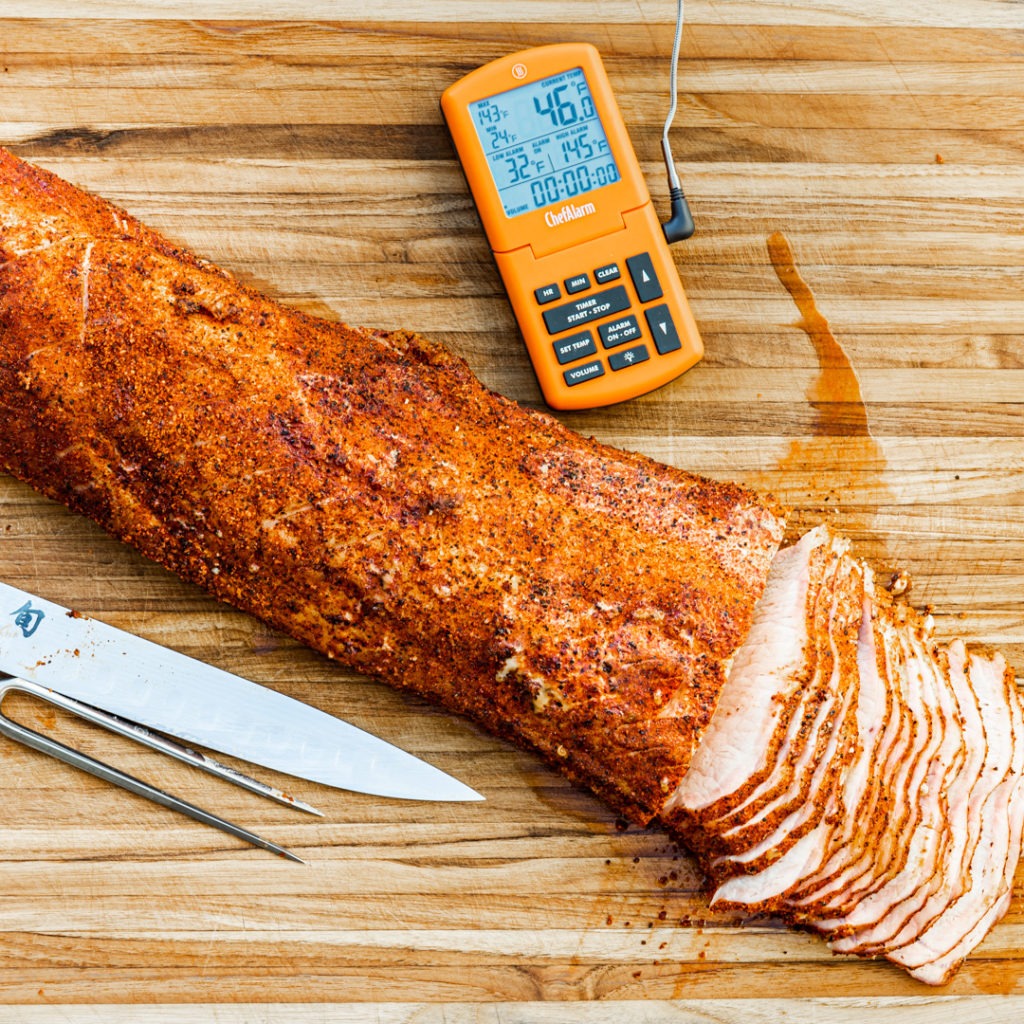
Pink pork is ok! At least, it can be.
First, let’s get one thing straight: color is not an indicator of doneness, nor of safety. If, for instance, you were to brine a pork loin with some curing salt, it will always be pink, no matter to what temperature you cook it. (That’s basically what Canadian bacon or peameal bacon is.) And a well-done pork loin that has suffered time and temperature abuse after cooking by sitting on the table too long is no longer safe to eat, even though it is not pink at all.
If we can’t rely on color to tell us what is safe, what can we use? Temperature! The USDA calls for pork to be cooked to 145°F (63°C) for food safety—much lower than the 160°F (71°C) that many people think is the cutoff for pork—and a quick reading with a Thermapen® ONE can tell us right away if our pork has achieved that safe temperature.
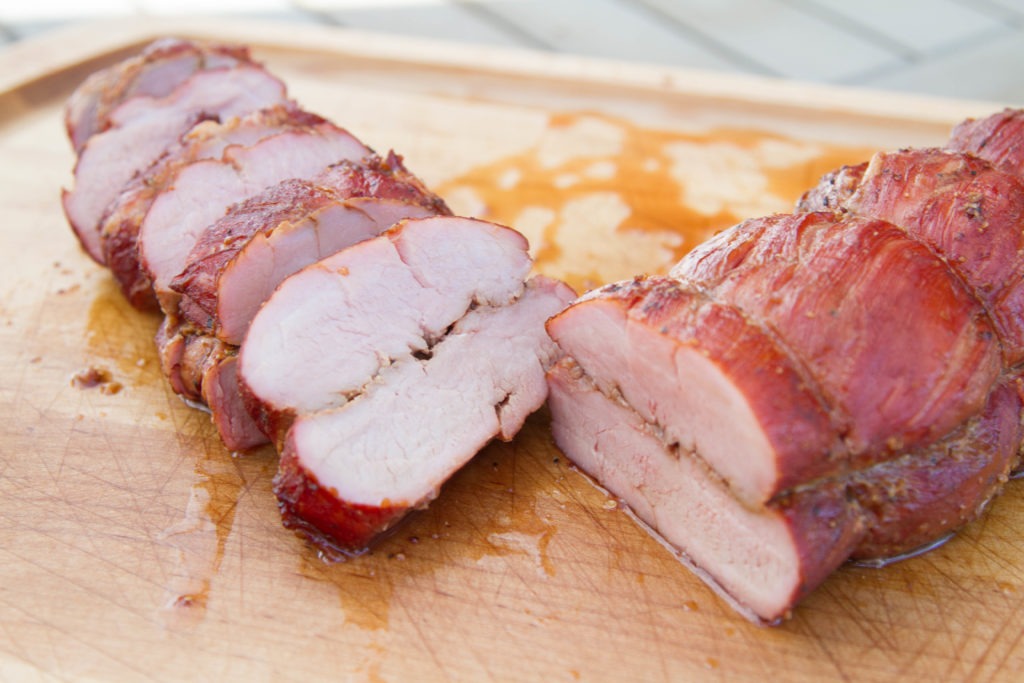
If you cook your meat slowly so there is little to no temperature gradation as you move from the outside to the inside, you will end up with meat that is significantly pinker throughout than if you pump the heat in quickly, “overcooking” the outside of the pork as the middle approaches perfect temp.
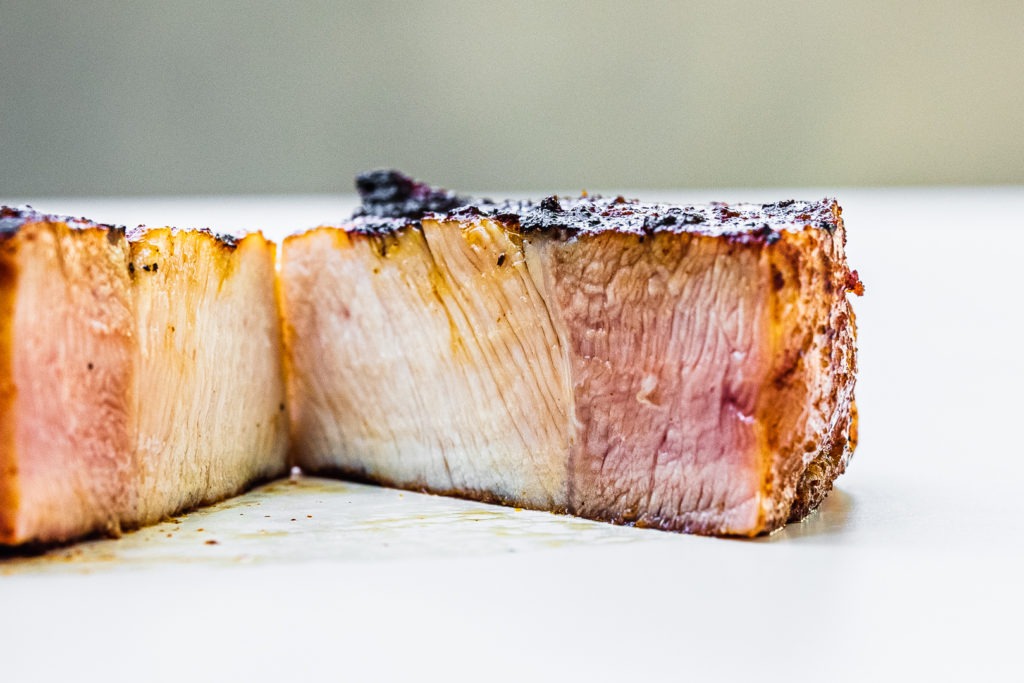
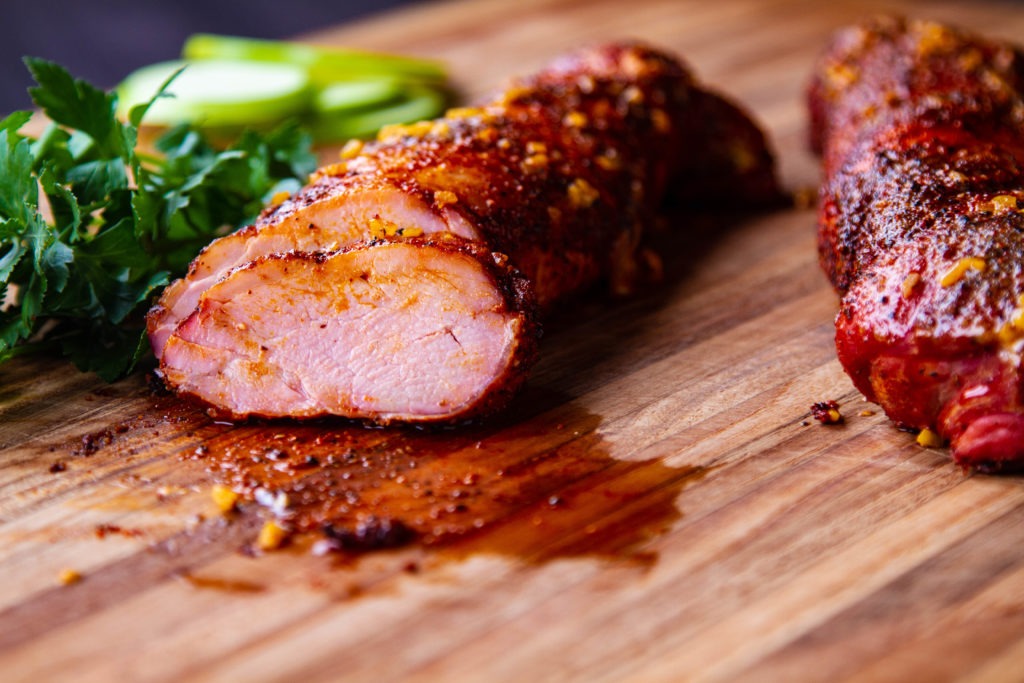
Food safety concerns and thermal thoughts about pork-cooking temperatures
As I said before, the thing that drove our ancestors to overcook their pork was the fear of trichinosis. But that is a fear that we don’t need to share for two reasons.
First, hog-raising practices have changed and are now mandated to be safer. According to the CDC, “The number of [trichinosis] cases decreased beginning in the mid-20th century because of legislation prohibiting the feeding of raw-meat garbage to hogs,” which basically eliminated the presence of the trichinella parasite in the hogs that we consume. In fact, the majority of trichinosis cases now come from undercooked wild animals, not farm-raised pork. (Wild carnivores and omnivores are the main modes of transmission.)
Second, even if we fear those parasites from our farm-raised hogs, there is a thermal hack to get around them. Freezing cuts of pork that are six inches thick or less to 5°F (-15°C) for 20 days eliminates any trichinella worms that may have somehow gotten into the flesh. Now, 20 days seems like a long time, but when I see a good sale on pork, I tend to stock up, and that pork can easily remain in my freezer for 20 days. When it emerges, it is going to be free of all trichinella, for sure. Well, it will if my freezer goes down to 5°F (-15°C), which I can verify with my ChefAlarm® leave-in probe thermometer.
(Note that the freezing trick may not work for wild game, as they can be infected with parasites that do not die off in those conditions. Continue to cook your game well.)
Cooking pork…medium rare?!?
If we eliminate the hazard of parasitic infection, all we’re left with is the standard risk of bacterial infection.
Conduct with me, if you will, a thought experiment. Imagine cooking a steak. To what temperature do you cook it? I usually aim for nothing higher than 135°F (57°C). You feel comfortable with your steak temperature, I assume, sure in your knowledge that steak is safe when cooked to that lower temperature.
But think of this: the USDA recommended doneness temp for beef cuts is 145°F (63°C). That’s right, the USDA says you should shy away from anything less than medium-well.
With the freezer-assured elimination of parasitic infection, we have put pork on the same footing as beef, and I, for one, regularly flout the USDA’s recommendations for beef temps. And here’s my own kitchen secret: I also flout them for pork.
Now, you may be shaking your head, or your screen, or your faith in my advice, but hear me out. Medium-cooked pork loin is delicious. It’s juicy, it’s tender, it has an amazing texture, and it lacks that saw-dusty chewiness of overcooked pork. And some cuts, especially the tenderloin, are even better cooked as low as medium-rare.
Caveats
Naturally, this option is not for everyone. Yes, technically there is risk. But there is risk with every steak, too—that’s why at every steakhouse there is that little warning at the bottom of the menu absolving the restaurant from liability: “the consumption of raw or undercooked potentially hazardous foods may result in foodborne illness.” If you or your loved ones are immunocompromised, if for safety reasons you should not be eating rare-ish meats at all, then don’t try this.
Every day, we weigh the risks of any and every food that we eat, and for me, the benefits outweigh the risks on this one most of the time.
What about thicker cuts like pork butt?
Freezing the meat works for cuts thinner than six inches, but what about thicker cuts like a picnic ham or pork butt? No worries, they aren’t better when cooked to medium. Those bigger, tougher BBQ cuts need longer exposure to low heat to slowly melt their collagen. Ribs, butt, hams…they all need finish temps between 195°F and 203°F (91°C and 95°C), and at that temperature, neither bacteria nor worms are a problem. Use a leave-in probe like Signals™ to keep track of your temps on long cooks like that, and you’ll have great results.
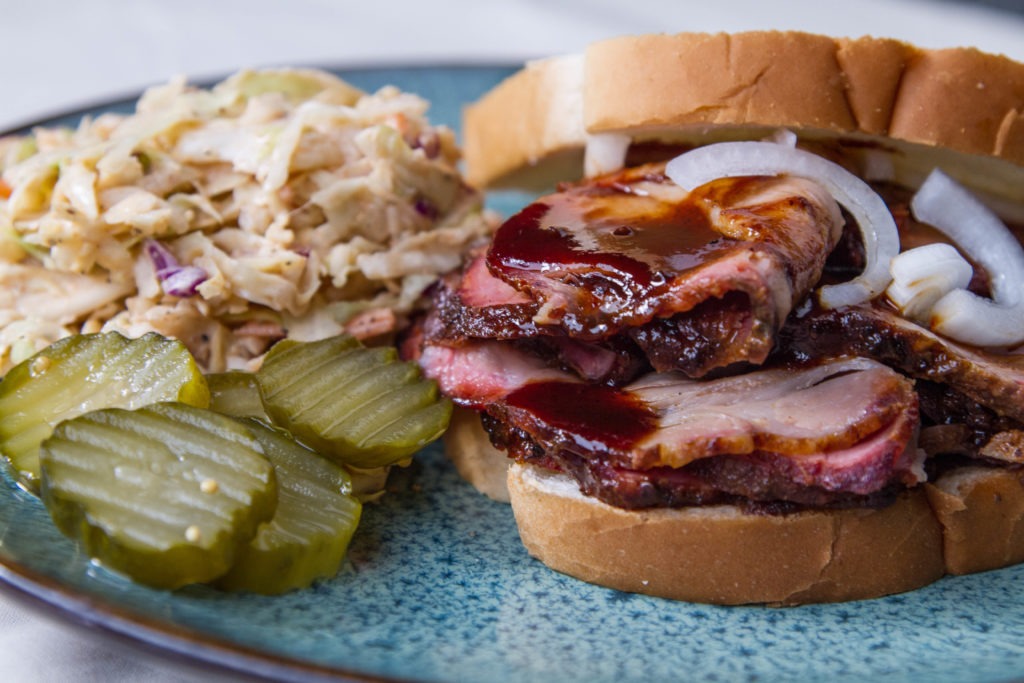
Conclusion
The advent of high-quality, fast thermometry combined with reforms in hog-raising practices have silently ushered in an era of pork-cooking possibilities that have not been fully realized. But even if you still choose not to try cooking your pork as low as medium, you should absolutely only cook it to 145°F (63°C). If your family tries to send it back because “it’s pink” or “it’s underdone,” tell them confidently that you took its temperature and that color is not an indicator of doneness. Pork deserves better. You deserve better. Eat better pork.
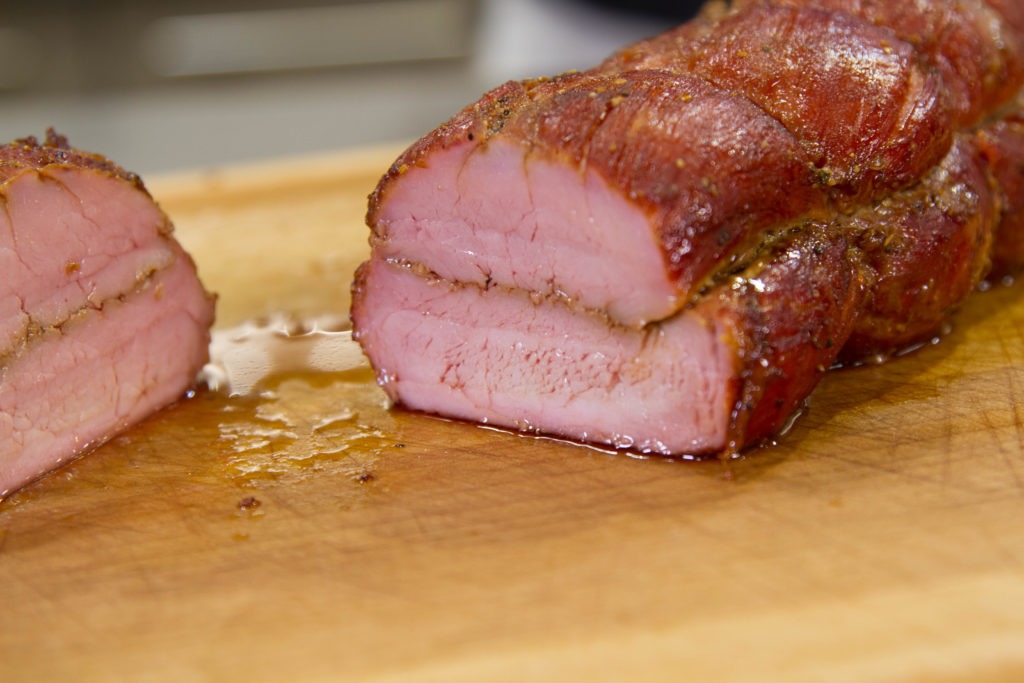
Shop now for products used in this post:


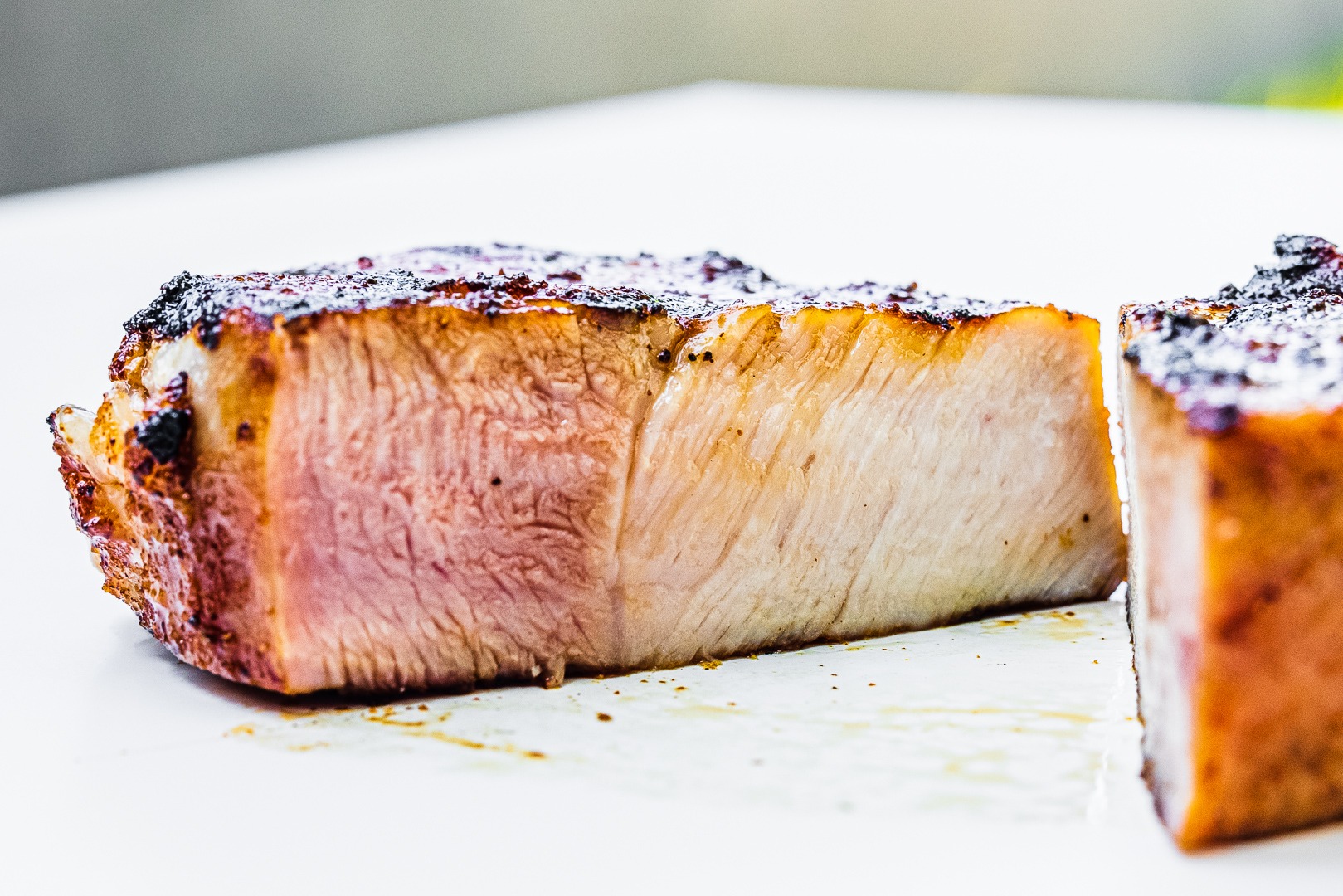


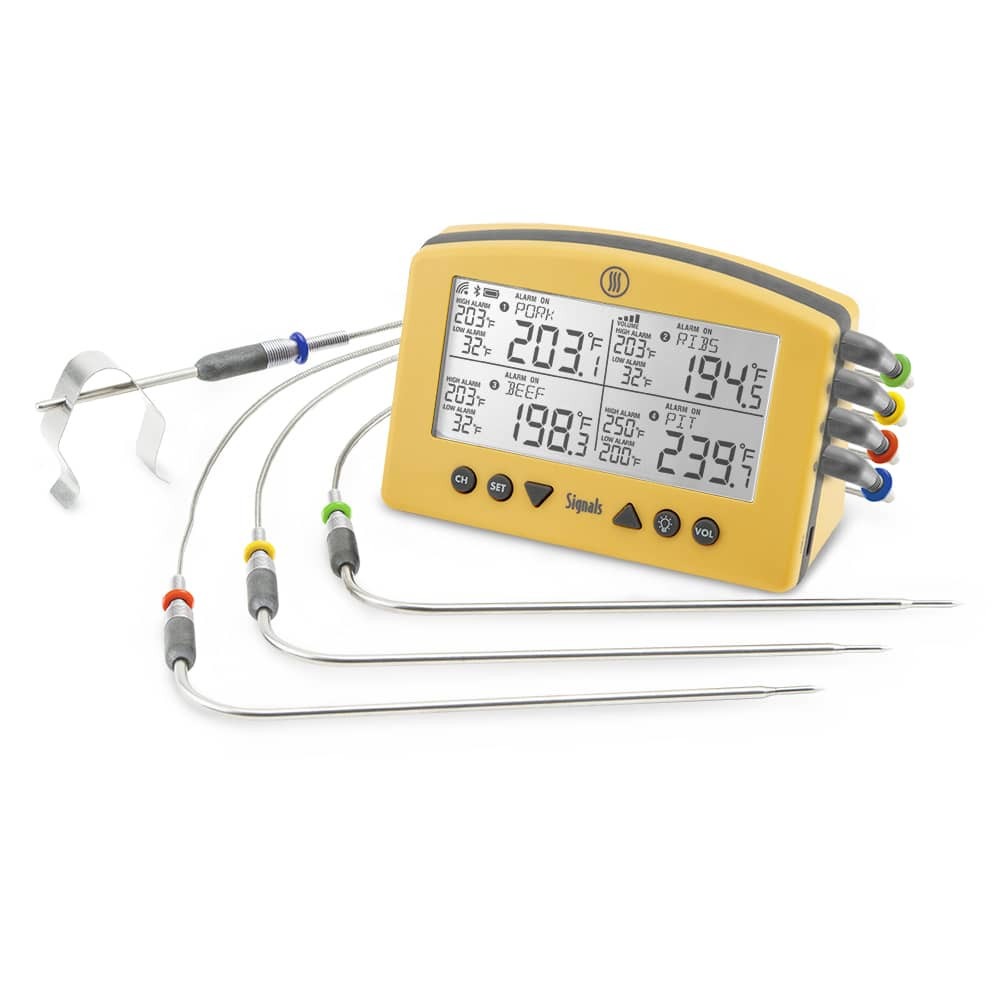
Ya I like my pork tenderloin like the one u show what did u put inside it my buts I’m getting them to 195 smoker at 200 degrees and 12hrs lower slower
Eric,
I’m afraid I don’t remember just what went into that cook! Chances are good it was a sweet-ish BBQ rub, though.
How about a follow-up post for those of us that prepare wild game? We regularly get wild boar as well as meat from browsers- deer, elk, and antelope. It’s all USDA inspected, but it’s my understanding is that his won’t necessarily catch trichinosis or other parasites. What are the safe temps for game cuts?
Thanks!
Mike,
A game post is a great idea! Off the top of my head, most game should be cooked to 160°F, omnivores and carnivores, especially. The herbivores can maybe go a little lower. I recommend excellent books by Hank Shaw for game-cooking knowledge.
Very good advice on cooking pork and when I cook my tenderloins, they come off the grill juicy and tender, but when my wife cooks, she jacks the temps up to 165 and beyond. I can not convince her that pork is perfectly safe at 145.
Keep your wife away from the grill, and do the cooking yourself. Easy as that. You’re right, she’s wrong.
Hi: I’m getting a reading of 200 or so for both breast of chicken and pork loin. Yet, both were not only pink inside but uncooked flesh. I’ve tried testing at different areas in the thickest parts with the meat off the heat and still get 195 to 205. This with our relatively new thermopen one. Could it be that far off? Perplexed. Ralph
Ralph,
It definitely should not be that far off. I assume you’re inserting the probe deep into the meat and pulling up through, looking for the lower temperature as the probe moves slowly through the meat. You may want to give our customer care a call to see if they can diagnose whatever may be wrong, either with your meat, your method, or, least likely, your thermometer.
If you brine the pork, will that aid in reducing/eliminating possible parasitic infection?
I’m aiming at the medium rare, is 135 *F the pull temp or final temp?
For commercial pork the chance of parasitic infection is almost zero these days anyhow, so unless your pork is wild-caught, that isn’t much of a concern. I often give my loins a pull temp of 135.
A study (link below) gives the following table (time+temp) for trichinosis parasite destruction:
Minimum Internal
Temperature (°F) Minimum Time (min)
130 30
132 15
134 6
136 3
138 2
140 1
142 1
144 Instant
Source: https://edis.ifas.ufl.edu/publication/fs153
Fantastic!